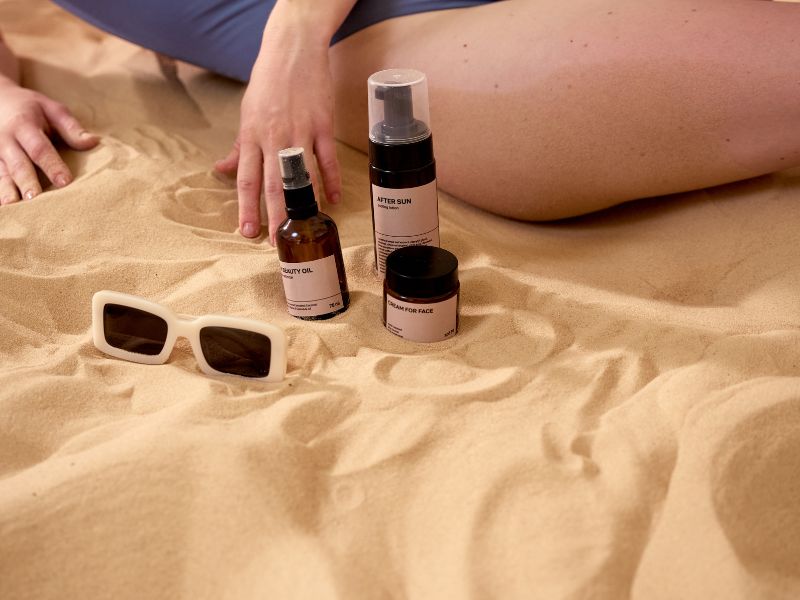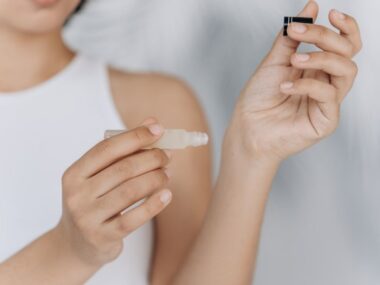Sunscreen is indispensable for safeguarding skin from harmful UV rays, significantly reducing the risk of skin cancer and slowing down premature aging. For individuals with acne-prone skin, however, sunscreen can feel like a tricky addition to skincare. Although it’s a crucial product for anyone seeking healthy, protected skin, certain sunscreen ingredients can clog pores, trap oils, or irritate the skin, leading to increased breakouts and inflamed acne.
Sunscreen Ingredients That Cause Acne
Acne-prone skin is particularly sensitive to occlusive or pore-clogging ingredients, which can trigger comedones (blackheads and whiteheads) and exacerbate inflamed acne. Some chemical sunscreen ingredients, like oxybenzone and octinoxate, penetrate the skin’s surface to absorb UV rays but may also irritate sensitive skin, sparking an inflammatory response that can worsen acne. Thick, emollient bases and certain oils can also act as occlusives, trapping sweat, oil, and bacteria against the skin, which can lead to more frequent breakouts.
For those with acne concerns, the key is in selecting sunscreens formulated with non-comedogenic ingredients that won’t clog pores. Mineral-based sunscreens containing zinc oxide or titanium dioxide are often recommended, as they sit on the skin’s surface, offering broad-spectrum UV protection without penetrating deeply or irritating the skin. Additionally, sunscreens labeled “oil-free” or “non-comedogenic” are typically designed to reduce the risk of breakouts.
Navigating sunscreen ingredients can feel daunting, but it’s possible to find options that protect your skin without compromising clarity. With the right ingredients and product choice, people with acne-prone skin can enjoy the benefits of sun protection while maintaining healthier, clearer skin.
The Relationship Between Sunscreen and Acne
Applying sunscreen is an important daily skincare habit, especially for acne-prone individuals. Sunscreen protects skin from UV damage, which can worsen acne scars and lead to hyperpigmentation. For acne-prone skin, however, not all sunscreens are created equal. Some can clog pores, trap sweat, and create a barrier on the skin that leads to inflammation. This process can trigger or worsen different forms of acne, including comedonal acne (blackheads and whiteheads) and inflammatory acne (papules, pustules, and cysts).
Understanding Comedogenicity in Sunscreen Ingredients
Comedogenicity refers to the likelihood of a substance to clog pores, a crucial factor for anyone with acne-prone skin. The comedogenic scale ranks ingredients on a scale of 0 to 5, with 0 being non-comedogenic and 5 being highly comedogenic. The higher the score, the more likely it is that the ingredient will clog pores, potentially causing acne. When examining sunscreen ingredients, understanding comedogenicity can be incredibly helpful in selecting acne-safe products.
How to Identify Comedogenic Ingredients
Many sunscreen labels now include terms like “non-comedogenic” or “oil-free,” which can be helpful indicators. However, it’s still beneficial to know specific ingredients to avoid, as not all “non-comedogenic” products work equally well for everyone.
Common Sunscreen Ingredients That Can Trigger Acne
Below are some of the most common sunscreen ingredients known to cause acne in sensitive or acne-prone skin.
i. Oxybenzone
Oxybenzone is a chemical UV filter commonly used in sunscreens. It’s known to cause skin irritation and has a high comedogenic potential, especially for those with sensitive or acne-prone skin.
ii. Octinoxate
Octinoxate is another chemical sunscreen ingredient that can trigger acne for some individuals. It absorbs UVB rays but has been known to cause skin irritation, leading to inflammation and potential breakouts.
iii. Avobenzone
Although it provides strong UVA protection, avobenzone is often found in chemical sunscreens and has been linked to skin irritation and sensitivity. This ingredient can also interact poorly with certain acne treatments, exacerbating breakouts.
iv. Octocrylene
Used to stabilize other sunscreen ingredients, octocrylene is another ingredient to watch out for. It has been known to clog pores and may be comedogenic, which can be problematic for acne-prone skin.
v. Isopropyl Myristate
A popular ingredient in sunscreens for its moisturizing properties, isopropyl myristate is highly comedogenic. It has a rating of 5 on the comedogenic scale and is known to clog pores, which can quickly lead to acne breakouts.
vi. Coconut Oil and Other Natural Oils
Natural oils, including coconut oil, may seem like a skin-friendly choice, but they can actually clog pores and lead to breakouts. For acne-prone individuals, oil-free sunscreens are usually a safer choice.
vii. Silicones and Polysiloxanes
Silicones, often labeled as dimethicone or cyclopentasiloxane, are used to give sunscreens a smooth finish. However, they can create a barrier that traps oil and bacteria on the skin, leading to clogged pores and acne.
viii. Lanolin and Derivatives
Lanolin and its derivatives are often used for their emollient properties. Unfortunately, lanolin is highly comedogenic and can block pores, making it a poor choice for acne-prone skin.
ix. Parabens and Synthetic Fragrances
Parabens and synthetic fragrances, while not directly comedogenic, can cause skin irritation and inflammation. For those prone to acne, it’s best to avoid these ingredients, as inflammation can lead to further breakouts.
Mineral vs. Chemical Sunscreens
Mineral sunscreens, also known as physical sunscreens, contain ingredients like zinc oxide and titanium dioxide that sit on the skin’s surface rather than being absorbed. Mineral sunscreens are generally less irritating and non-comedogenic, making them ideal for acne-prone skin.
Chemical sunscreens, by contrast, penetrate the skin to absorb UV rays and often contain ingredients that can clog pores or trigger sensitivity. Mineral sunscreens are less likely to cause breakouts, making them a better choice for many people with acne-prone skin.
Ingredients to Look for in Acne-Safe Sunscreens
Choosing sunscreen with acne-safe ingredients can make a big difference. Here are some ingredients that are known to be non-comedogenic and safe for acne-prone skin:
a. Zinc Oxide
A mineral sunscreen ingredient, zinc oxide is known for its soothing and anti-inflammatory properties. It sits on top of the skin, providing a physical barrier without clogging pores.
b. Titanium Dioxide
Another physical sunscreen ingredient, titanium dioxide is gentle on the skin and ideal for sensitive and acne-prone skin types.
c. Niacinamide
Niacinamide is a soothing ingredient that can help reduce inflammation and redness, making it a great addition to acne-prone skin formulations.
d. Aloe Vera
Known for its soothing and healing properties, aloe vera can help calm irritated skin and prevent inflammation-related breakouts.
e. Green Tea Extract
Green tea extract has antioxidant properties and helps to soothe acne-prone skin. It can reduce oil production, which is beneficial for preventing clogged pores.
How to Choose the Right Sunscreen for Acne-Prone Skin
Selecting the right sunscreen involves reading ingredient labels carefully. Look for products labeled “non-comedogenic” and “oil-free.” Gel-based or water-based sunscreens are usually safer for acne-prone skin, as they are less likely to clog pores than cream-based formulas. Powder sunscreens can also be a good option, providing sun protection without the risk of heavy pore blockage.
Application Tips to Prevent Sunscreen-Induced Acne
Applying sunscreen the right way can help prevent acne breakouts. Start by cleansing your skin thoroughly before application. When applying sunscreen, use only a thin, even layer, and avoid rubbing it in too aggressively. Make sure to cleanse your skin at the end of the day to remove any residue and avoid clogged pores.
Conclusion
Finding the right sunscreen for acne-prone skin can be challenging, but with careful ingredient selection and application, it’s entirely possible to protect your skin without causing breakouts. Look for sunscreens with acne-friendly ingredients like zinc oxide and niacinamide, and avoid common acne-causing agents like oxybenzone and isopropyl myristate. Remember, sun protection is essential, so finding a sunscreen that suits your skin type is well worth the effort.






